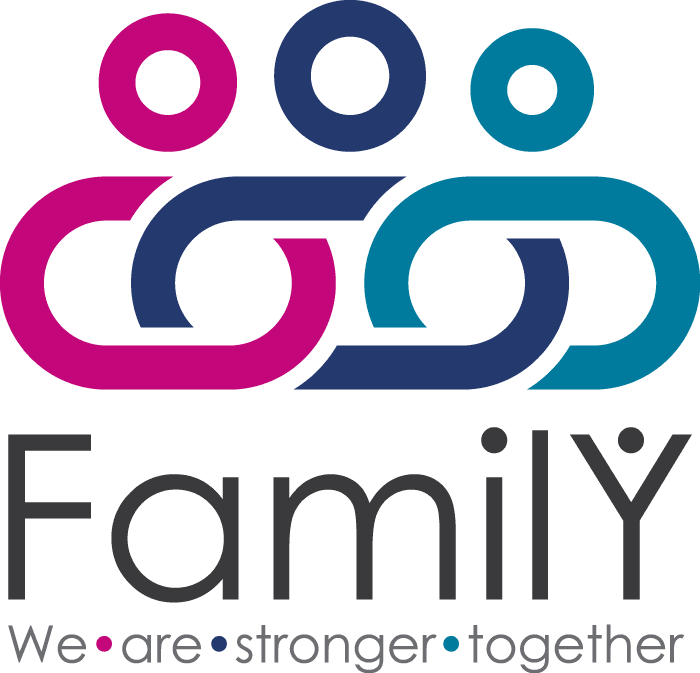Posted: November 9, 2016
Meeting children’s needs includes quality, interactive partnerships with families. Families are children’s first and most important teachers. The term family includes the significant adults in children’s lives who care for, protect, nurture, advocate for, and teach. These adults may be biological parents, adoptive and foster parents, grandparents, or legal guardians.

"Family engagement refers to the systematic inclusion of families in activities and programs that promote children's development, learning, and wellness, including in the planning, development, and evaluation of such activities, programs and systems" (U.S. Departments of ED and HHS 2016).
Consider the following insights and ideas in planning and improving family engagement (FE) programming:
Explore current research and best practice
Research helps to inform FE best practice. The 2016 "Policy Statement on Family Engagement from the Early Years to the Early Grades" (U.S. Departments of ED and HHS 2016) recommends that FE professional development focus on communicating children's progress to parents. One way is to build parent capacity for understanding child data and linking child data to activities families can do at home (talk, read, sing, experiment) to promote children's development, learning, and wellness. Parenting Matters: Supporting Parents of Children Ages 0-8 (Committee on Supporting the Parents of Young Children et al. 2016) states that because programs designed to prepare teachers do not often include education related to working with parents, there is a need for improved professional development for those working with families.
Cultivate relationships
Positive and productive relationships are the foundation to FE. Know the challenges parents may face in FE, such as language barriers and fears (fear of judgment, feelings of insecurity due to education and economic levels). Build relationships with families by tailoring partnerships to meet family needs, focus on the shared commitment to the child, and provide various opportunities to connect. Opportunities include:
- Welcome and get to know families - consider implementing a family survey *Family survey information provided in resources
- Incorporate home visits
- Provide FE information in the family's home language
- Create opportunities where families contribute ideas, weigh in on programming, and are decision makers
- Remove involvement barriers by offering child care, transportation, translational supports, and meals and snacks during meetings and events
Use a strengths-based approach
Families want programs and professionals to recognize their strengths and successes. By building on strengths, adults can identify core skills that contribute to positive child outcomes. Help families identify their strengths that contribute to positive outcomes. Harvard Center on the Developing Child offers, "Building the core capabilities of adults is essential not only to their own success as parents and workers, but also to the development of the same capabilities by the children in their care." Building adult strengths and skills promotes better outcomes overall--for child, family, program, community, and society. Assist families in exploring new goals and work together to achieve those goals.
"It makes a tremendous difference, particularly for people who have previously experienced trauma, to feel that there is someone capable who believes in you." - Family Court Judge Judith Waksberg
Link to learning
Parents' engagement in young children's learning is associated with improvements in children's literacy, behavior, and social-emotional well-being (Committee on Supporting the Parents of Young Children et al. 2016). Offer learning experiences for families, such as connecting families to online classes and resources, and family nights where guest speakers and families share their insights on topics of interest and need. The National Center on Parent, Family, and Community Engagement reminds professionals, "Learning can also deeply influence families' feelings about themselves, their abilities, and their future goals and actions."

Think beyond the program
Partner with community systems that can support FE practices. For example, libraries can offer families a comprehensive set of services such as access to technology, information for families in special circumstances, and opportunities to connect with other families. Libraries, summer youth programs, and museums are just a few examples of community systems that can be shared with families to help build support, connections, and learning. "It's no longer enough to focus family engagement solely on what happens in school," says Heather Weiss, Harvard Family Research Project's founder and director. "We have to reimagine this concept within the many opportunities available for anywhere, anytime learning--and we have to make sure those opportunities are available for all families."
Think in "next steps"
FE partnerships begin in the early years and continue into adulthood. Early childhood programs benefit from connecting family engagement goals and practices to future next-steps, such as connecting to the public school system. Along with offering family engagement toolkits, many school systems offer transition to kindergarten information and other FE resources. Early knowledge of these systems and connected, related FE outcomes sets families up for success and continued involvement.
Assess FE work
Review and reflect on quality and effective FE policies and practices. Assessment tools, such as the National Association for the Education of Young Children's Program Self Assessment Checklist, and the Annie E. Casey Foundation's Engaging Parents, Developing Leaders Self Assessment are available to help programs take a more in-depth look at what is working and what they can do to improve the quality of family engagement.
"Parents have the greatest stake in their children's well-being and are invaluable partners for organizations striving to improve the lives of kids and families." - The Annie E. Casey Foundation, 2016
Resources
The Annie E. Casey Foundation Engaging Parents, Developing Leaders: A Self-Assessment and Planning Tool for Nonprofits and Schools, 2016
Harvard Center on the Developing Child:
Harvard Graduate School of Education:
- "Usable Knowledge: Family Engagement - Equitable and Everywhere: New Ideas on How to Create Opportunities for All Parents and All Children," by Bari Walsh, April 27, 2015
- "Link It to Learning: Concrete Tips for Making Family Engagement Happen," by Bari Walsh, October 1, 2014
Harvard Family Research Project, Public Libraries: A Vital Space for Family Engagement, by M. Elena Lopez, Margaret Caspe, and Lorette McWilliams, August 9, 2016
NAEYC (National Association for the Education of Young Children), Family Engagement Forms and Tools (checklists, surveys and other FE tools)
Pennsylvania Strengthening Families
References
- Allen, LaRue, and Bridget B. Kelly, eds., and Committee on the Science of Children Birth to Age 8; Board on Children, Youth, and Families; Institute of Medicine; and National Research Council. 2015. Transforming the Workforce for Children Birth Through Age 8: A Unifying Foundation. Washington, DC: The National Academies Press.
- Committee on Supporting the Parents of Young Children; Board on Children, Youth, and Families; Division of Behavioral and Social Sciences and Education; National Academies of Sciences, Engineering, and Medicine. 2016. Parenting Matters: Supporting Parents of Children Ages 0-8. prepublication copy, uncorrected proofs. Washington, DC: The National Academies Press.
- The National Center on Parent, Family, and Community Engagement. n.d. "The Family Partnership Process: Engaging and Goal Setting With Families." U.S. Department of Health and Human Services, Office of Head Start.
- U.S. Department of Education (ED) and U.S. Department of Health and Human Services (HHS). 2016. "Policy Statement on Family Engagement form the Early Years to the Early Grades." U. S. Department of Health and Human Services and U.S. Department of Education.

